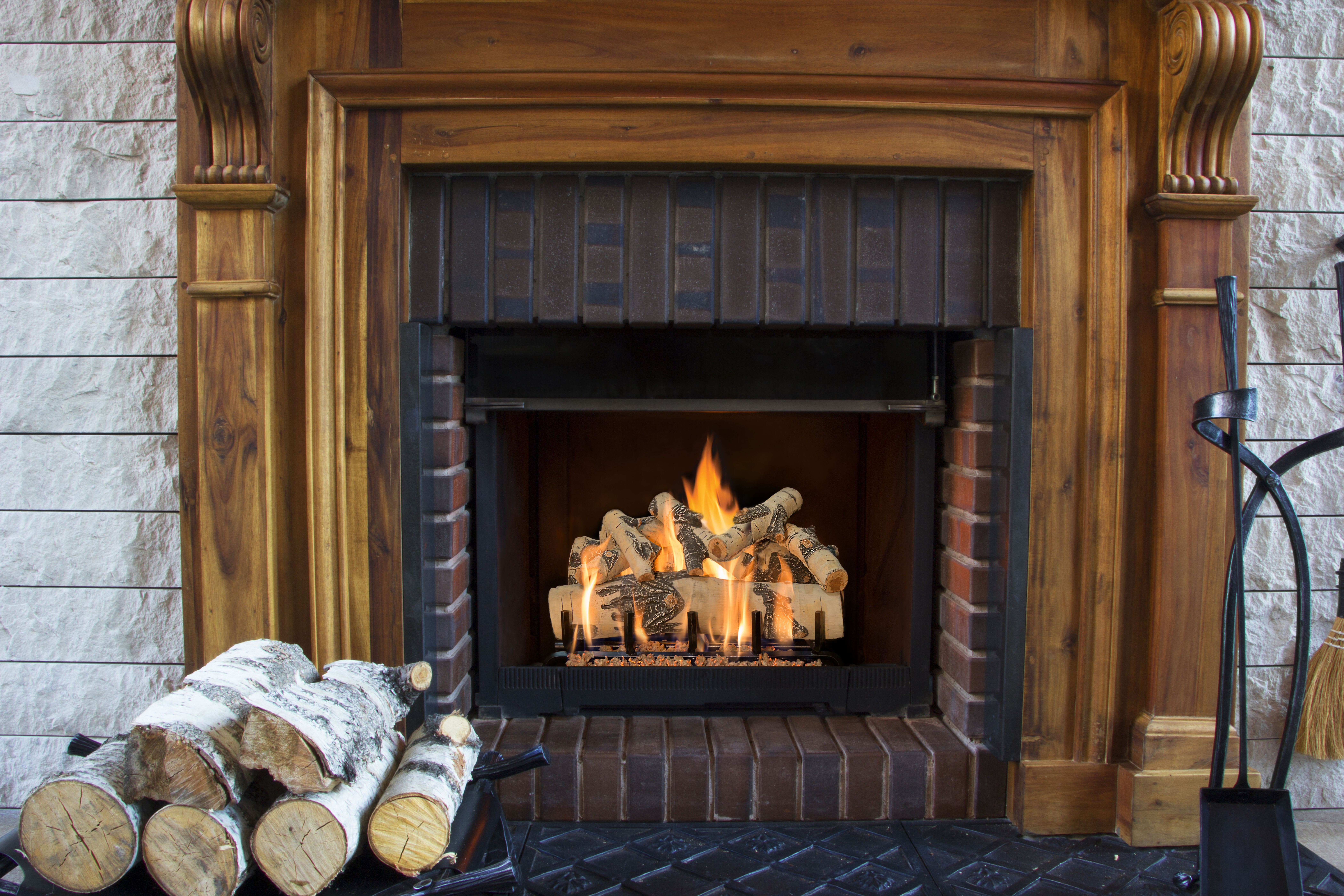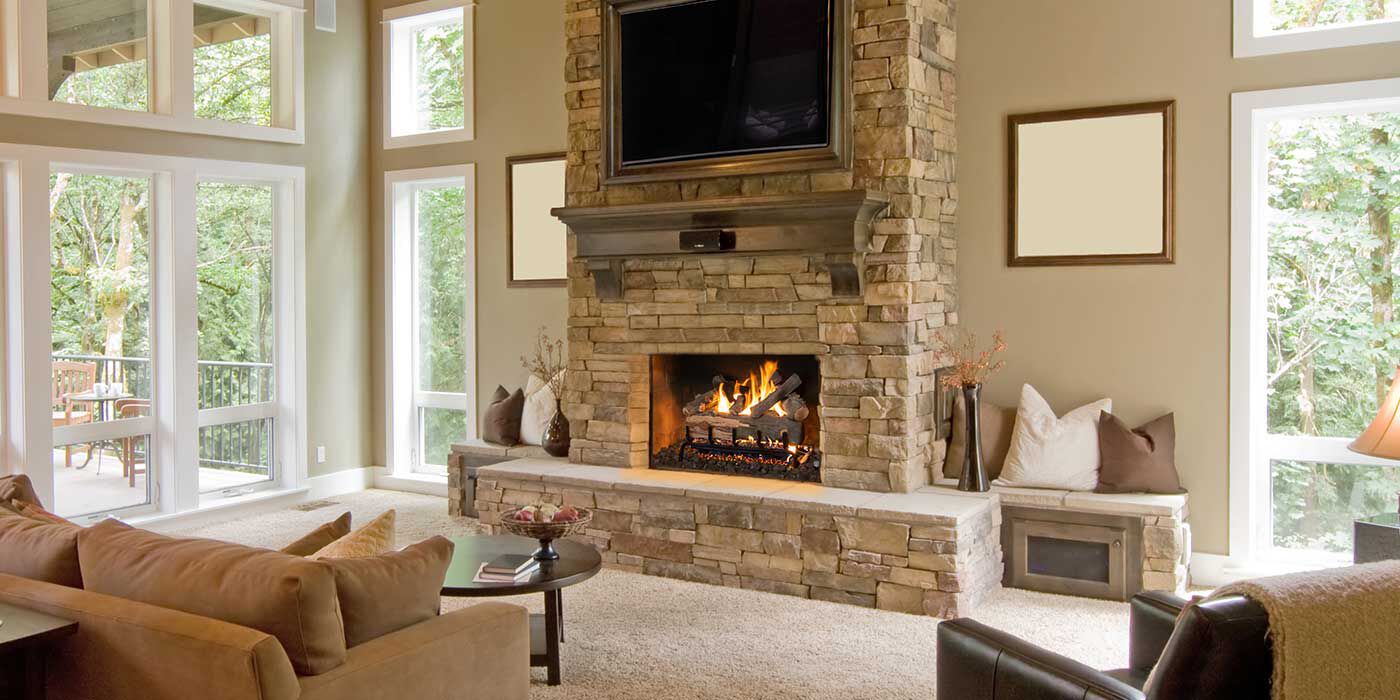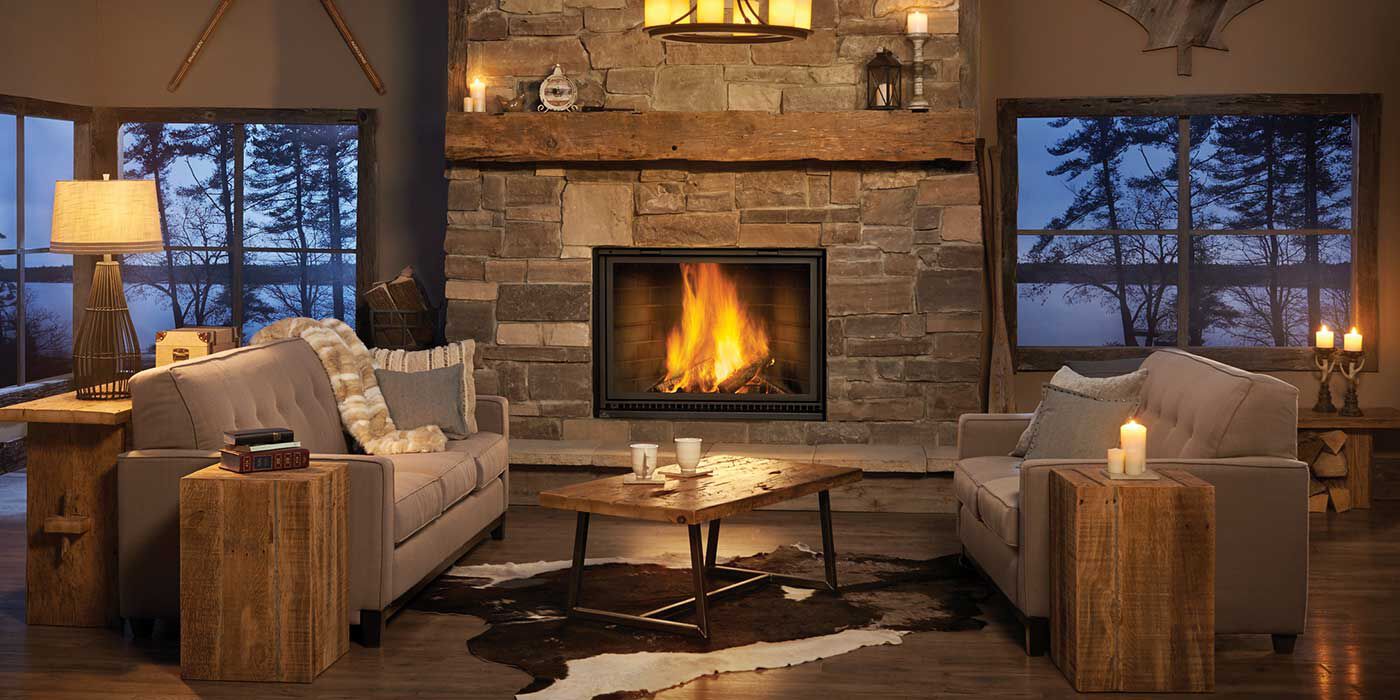By: Tom Regis, NFI Certified Master Hearth Professional
Last Updated: October 8, 2025
There’s something timeless about a crackling fire — but if you’re tired of hauling wood, cleaning up ash, and dealing with fluctuating heat, it might be time for an upgrade.
Converting your wood fireplace to gas logs offers the perfect blend of tradition and convenience. With just a few adjustments, you can enjoy the same cozy ambiance and flickering flames — without the mess or hassle.
In this guide, we’ll walk you through everything you need to know about making the switch, from the benefits and options available to the steps involved in a safe, efficient gas fireplace conversion.
What are Gas Logs?
Gas log sets are decorative ceramic or refractory logs that replace real wood logs. They provide the same ambiance as a traditional wood burning fire, without the hassle of hauling logs, cleaning up ash, or dealing with smoke.
One of the key benefits of gas logs is flexibility. Whether you choose a Vented log set for maximum efficiency or a Ventless log set for easy installation, there’s an option to fit nearly every home.
Safety is another advantage. Unlike wood, gas logs won’t create sparks or ash, reducing the chance of fire hazards and mess. However, homeowners should always install gas logs properly, — especially Ventless models — to maintain safe indoor air quality. While some skilled DIY enthusiasts may consider handling parts of the setup, professional installation is always recommended.
Overall, gas logs combine the charm of a classic fireplace with modern convenience. They’re an affordable and low-maintenance solution that instantly elevates your space.
Vented Vs Ventless Gas Logs
Gas logs come in Vented and Ventless (Vent-Free) models.
Vented gas log sets provide an attractive flame appearance, while Ventless gas log sets prioritize heat output in order to produce more warmth for your home.
The main drawback with Vented options is efficiency. Just like a real wood fire, you must follow local codes and have a working chimney and a fireplace damper to ensure proper venting. Keep the damper open to prevent the buildup of hot air, gas, and combustion byproducts in your home.
With the damper open, most of the heat from a Vented log set escapes through the chimney. This is why most customers purchase Vented logs for decoration, rather than reliable heat.
If warmth is what you’re after, Ventless logs are the way to go. They don't require a chimney, flue, or venting system of any kind. All the heat produced circulates back into your living room, rather than escaping through the chimney. They achieve clean, smokeless flames and burn at nearly 100% efficiency, allowing them to operate safely without venting.
While Vent-free gas logs can achieve a realistic flame, the flames are smaller than Vented gas fireplace logs and may have a blue tint.
Have Your Chimney Inspected First
A professional chimney sweep should be hired to inspect your chimney as the first step.
They’ll check for any faults or problems with your fireplace or chimney, and ensure that they’re ready for a gas log set.
Seal Off Your Ash Dump
If your firebox has an ash dump, it will need to be sealed off.
The access door is usually located in the center of your firebox. An ash dump is used to collect ash from your wood burning fire, making your fireplace easy to clean.
With gas logs, gas can pool up inside of your fireplace and create a potential hazard if the situation is not addressed.
Hire a Professional
It’s important to hire a professional to install your gas logs. If they’re not properly placed, flame impingement can result, leading to carbon monoxide production.
Flame impingement is when the logs block the flames from the burner. A certified professional will be able to place them correctly and avoid this situation.
They’ll also be able to run a gas line to your fireplace if there’s not one there already.
Pro Tip:
Be sure to mount a carbon monoxide detector near your fireplace after installing gas logs.
Converting Back to Wood Burning from Gas Logs
If you find yourself missing the natural look and feel of a wood burning fire, you can always convert back.
You’ll need to hire a professional to remove the gas logs, burner system, and all related components first, and then cap the gas line.
If you have an ash dump, you should also consider unsealing it to make clean-up after a wood fire easier.
Once the gas log set and its components are removed, clean out your firebox and then have your chimney professionally inspected. After that, you’re all set — enjoy your wood burning fireplace again!
Should You Keep Your Gas Line?
When converting back to wood from gas logs, you may want to keep the gas line in your fireplace.
Leaving your gas line allows you to add a gas starter pipe to your fireplace. A gas starter pipe provides gas to your fireplace, meaning you won’t need any kindling to start a fire, just a match.
However, it's important to note that this is not recommended if you’re using Propane. It should only be used with Natural Gas.
Prefer to Listen?
FAQs
Not exactly. Direct Vent and Ventless gas fireplaces work differently and will require a specific type of log set. For example, vent-free gas logs are made for approved ventless systems, while vented log sets need to be installed in a fully functional firebox with a working chimney. Always check your fireplace type before purchasing.
The size depends on the dimensions of your firebox. Measure the height, width, and depth of your fireplace before shopping. Choosing the right size ensures the logs look realistic and your burner system works efficiently.
You can choose from traditional log sets, like oak or birch, or go with more modern designs like driftwood. Leading brands like Grand Canyon Gas Logs, Napoleon, Superior, Empire, and RH Peterson (makers of Real Fyre logs) offer a wide variety of options to match different home styles.
While both increase fireplace functionality and reduce heating costs, they are two different types of products. Gas log sets are a set of ceramic logs and a burner system that sits inside your fireplace, while gas inserts are metal boxes that are “inserted” into the firebox and finished with a decorative surround. Both gas log sets and gas fireplace inserts offer ease of use and let you transform an existing fireplace.
We're Here to Help
Do you have more questions for us? Call our NFI certified experts at (800) 919-1904 today!
More Resources
Head over to our Gas Log Buying Guide to learn even more about gas logs!
Check out our top 6 reasons why gas logs are a great alternative to wood burning fireplaces!
Read our Gas Log FAQ page for answers to the most commonly asked questions about gas logs.
 |
Thomas Regis has been a Technical Sales Representative at Woodland Direct for four years. An NFI-Certified expert, Thomas effortlessly directs his clients toward the perfect products, offering essential installation and safety advice. He's tackled projects of all sizes, from backyard fire pits to custom indoor fireplaces. He has even helped Amy Adams, owner of the Tennessee Titans, find a new fireplace for her home! Beyond his professional achievements, Thomas actively participates in community service projects and enjoys spending time on the basketball court. Call him or one of our experts in fire at 800.919.1904. |


